Introduction
Rex begonias are spectacular rhizomatous perennials famous for their variegated, colorful foliage and ease of growth. Originating from the tropical and subtropical regions of India, Begonia rex is the parent of the large group of hybrids that fall under the begonia rex-cultorum group. Rex begonias are well suited for hanging baskets, windowsills, or houseplants. In more tropical climates, like Florida, rex begonias can also be found adding vibrant foliage and dimension to landscapes.
This EDIS publication is meant for Florida homeowners and horticulturalists interested in learning more about begonias.
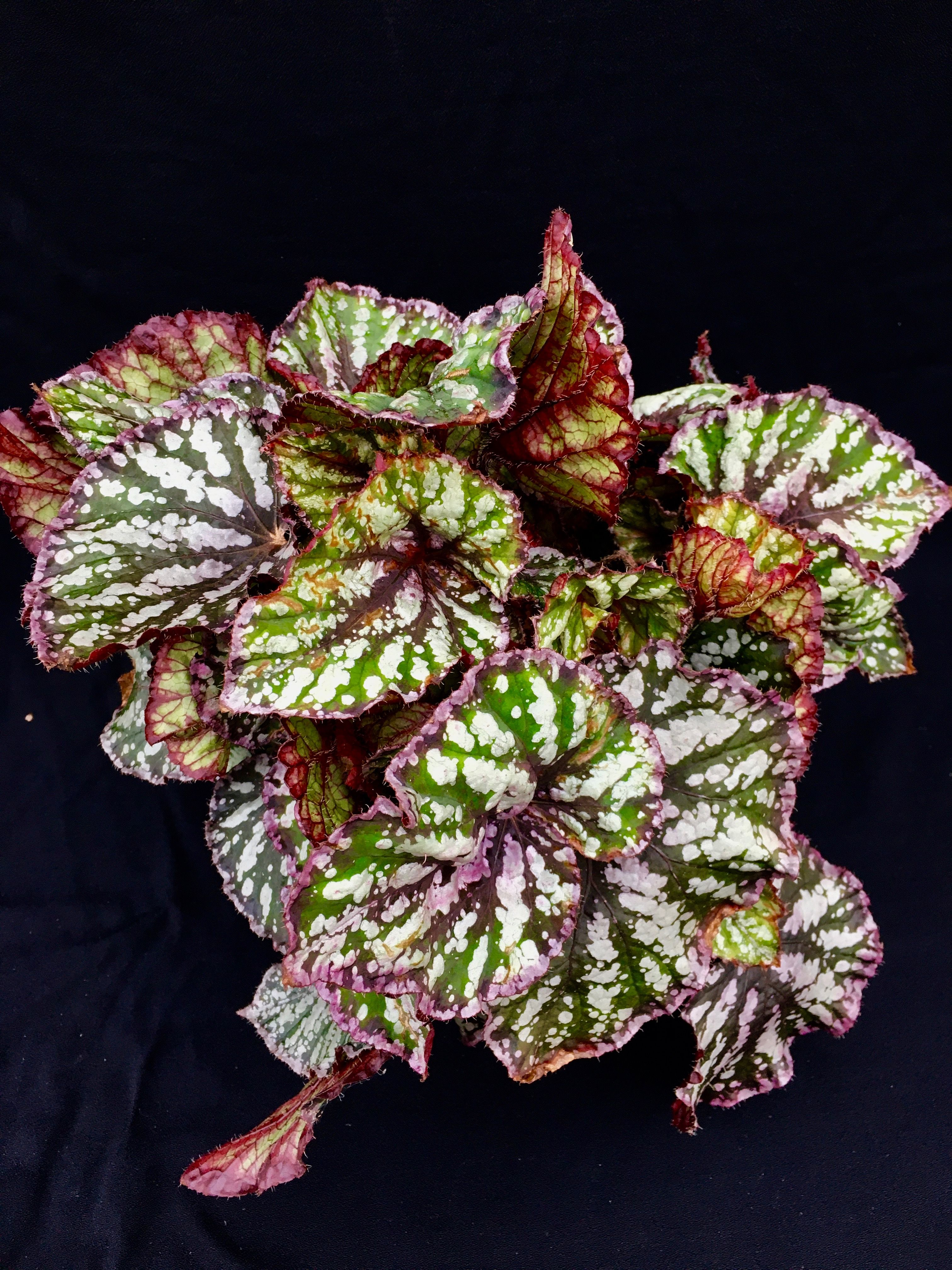
Credit: Julian Ginori, UF/IFAS
General Information
Rex begonias vary greatly in color, shape, texture, and size of plant and leaf but carry some consistent characteristics. Rex begonia plants generally have a dense, round architecture; they typically grow to a height of 12–24 inches with an equivalent spread from the center outwards, making them ideal for indoor home landscaping. Leaves of rex begonias come in a wide variety of colors, such as green, red, pink, silver, gray, lavender, and maroon, and they are known to have a metallic or iridescent glow. These plants also offer various shapes for your choice. Rex begonias tend to have an alternate leaf arrangement with simple leaves that stem from a rhizome beneath the soil. Their leaves are asymmetrical, cordate, and petiolate with dentate/ciliate margins, resulting in different eye-catching foliage patterns. The leaf venation is palmate, extending outward from the petiole. The leaf blades can be anywhere from approximately three inches to over six inches. Although they are primarily considered as foliage plants, rex begonias produce small pink to white flowers that are often overshadowed by their large, showy leaves, allowing for conventional breeding by the crossing of various varieties. Before you decide to pick up rex begonias for your garden or indoor plants, keep in mind that the underground parts of rex begonia plants are rich in calcium oxalate, which is highly poisonous to most pets.
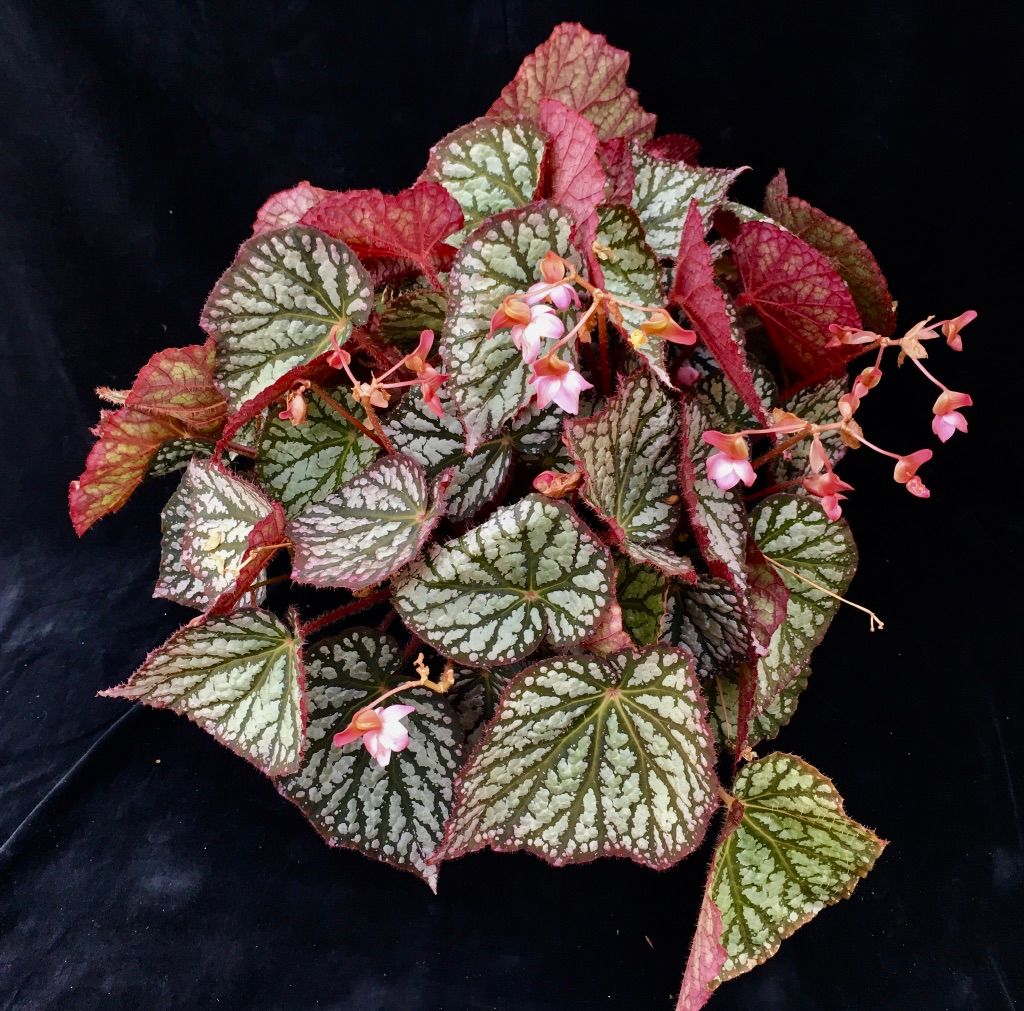
Credit: Julian Ginori, UF/IFAS
Cultivation Management
Rex-cultorum begonias can be propagated in three ways, based on their type: by softwood cuttings, by leaf cuttings, or by dividing the rhizomes in summer. Unique to this genus, propagation by leaf cutting can be successful no matter how you cut the leaf because rex begonias have the ability to regenerate completely from any plant part. Refer to A Beginner’s Guide to Begonia: Vegetative Propagation for more information on how to successfully propagate begonias.
Growing Temperature
Rex begonias are well adapted to USDA Hardiness Zones 7–12, with a temperature range of 60°F–80°F. Some varieties, like Jurassic series, can handle temperatures as low as 50°F or as high as 90°F. Generally, rex begonia plants prefer relatively cool temperatures: the optimum day temperature range is 72°F–80°F and 60°F–65°F at night.
Potting Medium and Irrigation
Rex begonias have a very fine root system that requiresaerated soil;peat-based potting mix with a pH of 5.7–6.4 would be ideal for containers. The commercial packaged soils Pro-Mix, Sunshine Mix, or Baccto Professional can be used straight from the bag. Enriching the soil with plenty of organic compost and manure will improve plant growth when they are grown directly in the ground.Rex begonias prefer a very humid environment, but overwatering will easily cause root rot. Make sure the pots have drainage holes, and if planting in the ground, the soil should be maintained and well-aerated by selecting the right location with good drain capacity.Allow the top third of the soil todry before watering again and properly drain the soil after each watering session. You can stick a finger into the soil to check the moisture before watering. Rex begonia requires high humidity (50% or higher) for healthy growth. If humidity is low, you will notice the leaf edges become crisp. If it is difficult to keep indoor humidity high, place the pots on gravel or pebble with water in a round tray, which will greatly help maintain high humidity for the plants.
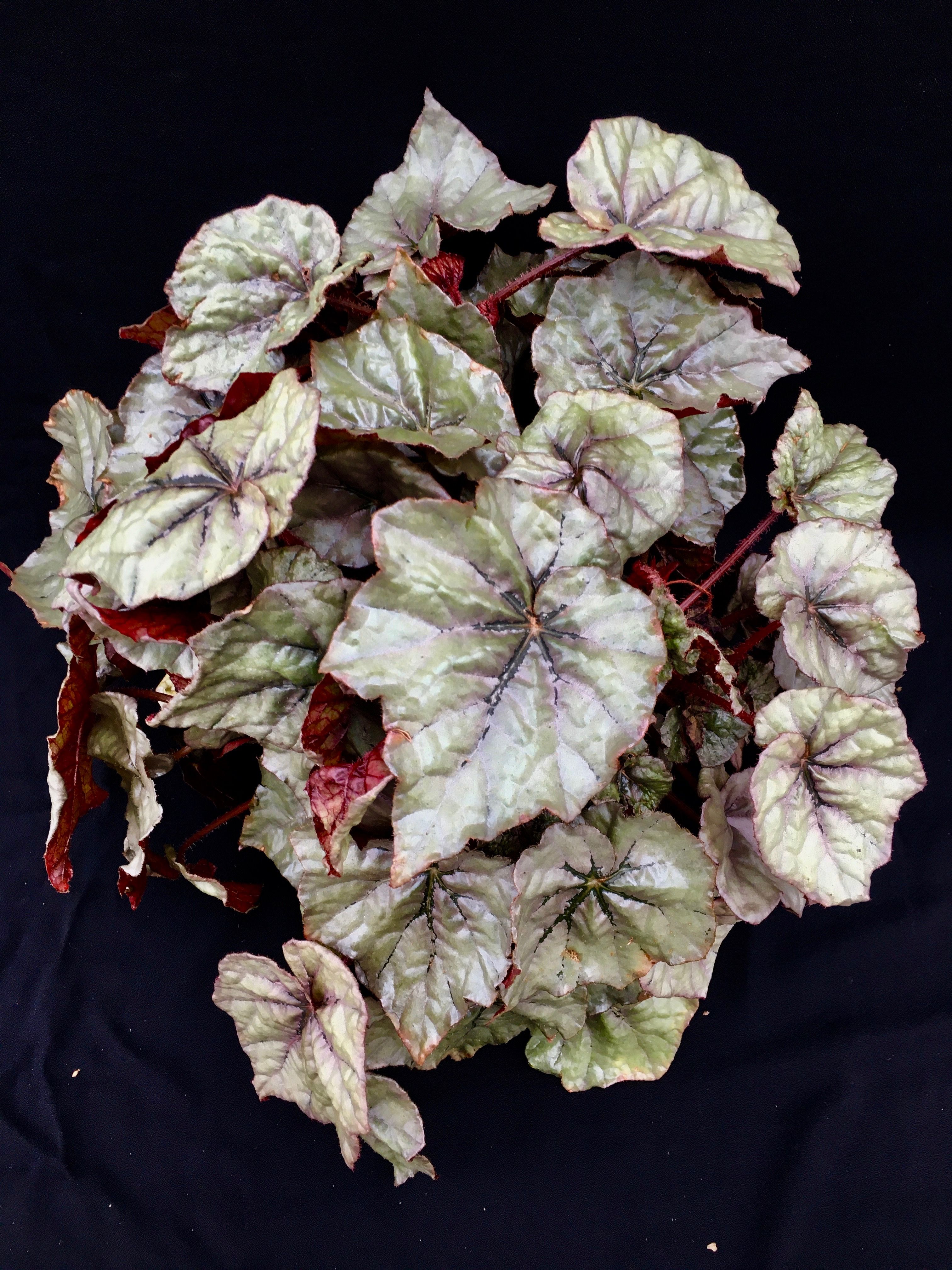
Credit: Julian Ginori, UF/IFAS
Light
Rex begonias do well in bright, indirect light. Foliage of these plants could burn when plants are exposed to excessive direct sunlight. The ideal light intensity for most rex begonia varieties is 1,500 to 2,200 foot-candles. Lower-level light (~1000 foot-candles) can be used when the plants are transplanted for the first two weeks. Rex begonias require 14 hours of day length to maintain growth. The strong direct sunlight can be shaded by a curtain for indoor rex begonia, and LED plant grow lights will be effective for making up the light period required by these plants. In fall or winter, especially in colder hardiness zones, many cultivars stop growing and might even drop their leaves and enter a dormant state.
Fertilizer
Rex begonias tend to handle salts poorly, and dissolved salts found in “hard” water may cause great damage to plants grown in the soil with poor drainage. Fertilize every month with foliage feed. The most important nutrient that will allow the foliage to grow and remain vibrant is nitrogen. A balanced fertilizer like a 15-15-15 or 7-9-5 at 100–150 ppm nitrogen would ensure optimal growth of these plants. Be sure to remove any dead leaves from the top of the soil. The dead leaves can lead to pests and disease.
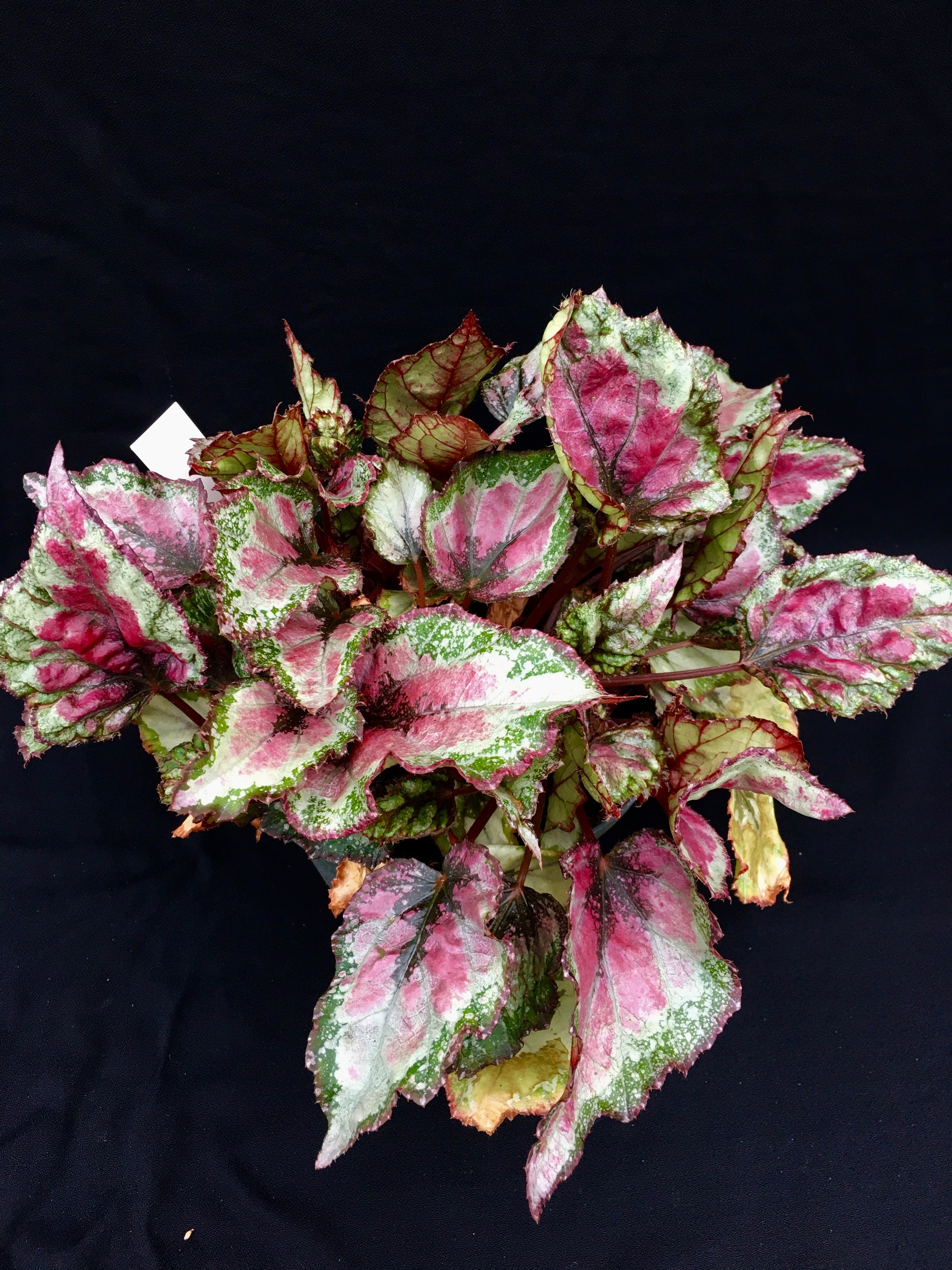
Credit: Julian Ginori, UF/IFAS
Pests and Disease
Major adversaries to rex-cultorum are botrytis and powdery mildew. These fungal diseases are characterized by white spores on the leaves (Figure 5). The best way to prevent these is to remove dead leaves quickly and ensure good air circulation reaches the plant. A systemic fungicide may be used as well.
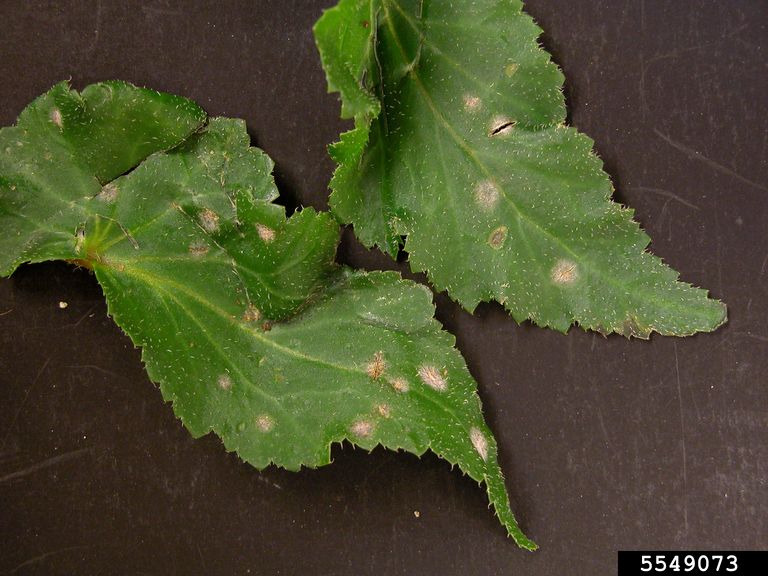
Credit: Penn State Department of Plant Pathology & Environmental Microbiology Archives, Penn State University, Bugwood.org
Mealybugs may appear at joints between leaf and stem or stem and rhizome. The solution is to dip a cotton swab in household rubbing alcohol and apply to mealybugs or invest in predator insects that specifically feed on mealybugs. More information on the specific varieties of mealybugs that affect begonias can be found here: citrus mealybug, longtailed mealybug, and obscure mealybug.
In addition to powdery mildew and mealybugs, begonia bacterial leaf spot is known to affect certain varieties of begonia, such as rex, tuberous, Lorraine and especially Rieger Elatior (Pataky 1989). Yellow lesions first appear on the underside of leaves but soon turn brown and circular as they age. As the disease progresses, its effects will become noticeable on the upper surface of the leaf, typically displaying yellow lesions around the margins.
References
Cubey, J., and W. Wesley. 2006. “Begonia Rex Cultorum Group.” Royal Horticultural Society Bulletin Number 16. https://www.rhs.org.uk/plants/pdfs/plant-trials-and-awards/plant-bulletins/begonia-rex.pdf
Ginori, Julian, Alfred Huo, and Caroline R. Warwick. 2020. “A Beginner’s Guide to Begonias: Classification and Diversity.” EDIS 2020 (1). https://doi.org/10.32473/edis-ep581-2020
Moorman, Gary W. 2016. “Begonia Diseases.” Penn State Extension. https://extension.psu.edu/begonia-diseases
Pataky, Nancy R. 1989. “Bacterial Leaf Spot of Begonia.” University of Illinois Extension, Department of Crop Sciences, RPD No. 659. https://ipm.illinois.edu/diseases/rpds/659.pdf